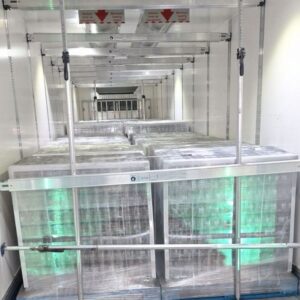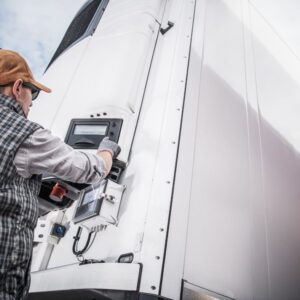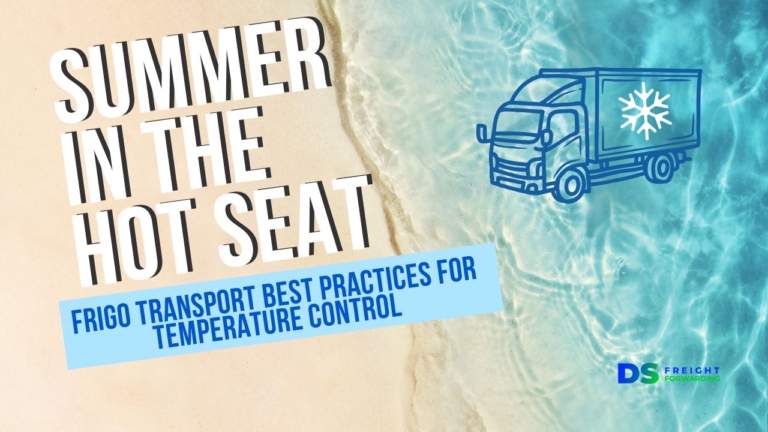When summer hits full force across Europe it heats up the pressure on everyone involved in cold chain logistics. People see it every year: spoiled cargo, disappointed clients and that often leads to broken trust. Not because the frigo trucks weren’t good enough but because they weren’t used properly.
Technology is a powerful ally, but only when drivers and dispatchers understand the risks and stick to the process. A perfectly capable refrigeration unit can still fail its purpose if pre-cooling is skipped or air circulation is blocked.
So let’s break down the five key practices that make all the difference when transporting fresh and frozen goods in summer conditions.
 1. Pre-Cooling the trailer: A critical first step
1. Pre-Cooling the trailer: A critical first step
Before any cargo is loaded, especially frozen products, the trailer must be properly pre-cooled. Why?
Loading into a warm trailer creates a temperature shock.
Frozen goods can begin to be affected, especially when ambient temperatures exceed 30°C.
Pre-cooling ensures the cold chain remains unbroken from minute one.
Tip: Check that the entire interior has reached the set point before doors open for loading.
 2. Airflow is science: Don’t block the cold
2. Airflow is science: Don’t block the cold
Refrigerated trailers rely on a controlled airflow system. Cold air is circulated from the unit, flows through and around the cargo, and returns through air channels or grilles.
 Common mistakes that disrupt airflow:
Common mistakes that disrupt airflow:

Stacking pallets too high (above the load line)
Blocking the front evaporator or rear air return
Pressing cargo against sidewalls
Overloading beyond recommended weight
These lead to hot spots, uneven temperatures, and risk of spoilage even if the unit appears to be working correctly.
Solution: Leave space between walls, pallets, and ceiling. Use air chute systems when possible.
![]() 3. FRC certification: More than a formality
3. FRC certification: More than a formality
An updated FRC (ATP) certificate is a non-negotiable requirement. It confirms that your frigo trailer meets international standards for:
Proper insulation (K coefficient)*
Cold air retention
Compatibility with ATP regulations for perishable transport
At DS Freight Forwarding, our system automatically blocks carriers without a valid FRC. For us, it is beyond bureaucracy –it’s about food safety and client trust.
 4. Frequent checks and thermograph data
4. Frequent checks and thermograph data

During long-haul trips, especially across borders or through high-temperature zones:
Frequent temperature checks must be logged.
Thermograph printouts or digital logs must be available on delivery.
Any temperature deviation should be immediately reported and recorded.
We recommend:
Calibrated temperature sensors
Double-checking trailer settings after every stop
Using real-time tracking tools where possible
 5. Summer-specific pitfalls to avoid
5. Summer-specific pitfalls to avoid
Hot weather brings extra risks:
Fueling with the unit off: trailer warms rapidly
Delays in loading/unloading: with doors open, cold escapes fast
Parking in the sun for extended periods
Overloading, leading to airflow blockage and excessive refrigeration cycling
Carriers must adapt routines to the season with extra vigilance.
 Final thoughts
Final thoughts
Temperature-sensitive transport is a discipline that combines planning, equipment, procedures, and accountability.
At DS Freight Forwarding, we work with partners who care.
Because our clients trust us with products that can’t afford even a 1°C mistake.
*K coefficient also known as thermal conductivity, indicates how well a material conducts heat. A lower K coefficient means the material is a better insulator because it resists heat flow more effectively. It’s a measure of the material’s inherent ability to transfer heat, independent of thickness
